Online Interview with Beth Kohl
Looking for the second list of Embryo Culture bloggers? It’s right below this post. Click here to jump there immediately. But wait, don’t you want to read the author’s thoughts?
You know how some people remember everyone they slept with (I actually remember this too…I was only a kissing slut)? I remember how I heard about every book on my bookshelf. Where I bought it, where I read about it, if I went to the store specifically to pick it up or if I found it while browsing. I can usually remember locations where I read it and the bookmark I used. This level obviously points to one conclusion–I have a book fetish.
I was at home when I read my husband’s email: Nextbook is featuring a book by Beth Kohl and they have a link to an interview on Salon with her. And, ten commandments be damned, I coveted. If you’ve read Beth’s work on the Huffington Post, you know that she is smart and engaging and not just a little bit sassy. Anyone who refers to her period as an “underpant-wrecking mess” has my attention.
Her book didn’t disappoint. It serves two distinct purposes–for the outsider, it is a window into the experience. She chronicles her numerous IVF cycles in great detail from the constant wandings to the bickering that takes place on the way to the clinic. For the insider, she asks the tough questions: what are the long-term effects of treatments on both the adult and the child; should there be an age cut-off for treatments; how does ART fit into our beliefs within religion?
It is an important text in the infertility pantheon specifically because it does bridge that gap between outsider and insider and because it extends beyond the self-help or how-to books (which are also very important) and becomes more of an ethical compass for the journey. Kohl doesn’t wrap it up with neat answers within the pages. Infertility and the decisions that accompany it are messy. It is really hard to have solid, unwavering answers; especially with the understanding that medicine is more art than anything else and even something as intricate as IVF is simply like throwing pasta against the wall see what sticks. When you can’t create a single solution that will work the same way each time even for the same person, it becomes impossible to make easy decisions across a diverse community. Kohl’s book is a great starting point to having those internal discussions before you’re too deep in the process.
I didn’t sit down with Beth Kohl because she’s in the Midwest and I’m on the East Coast, but let’s just pretend that we both grabbed martinis in the Virtual Lushary. In reality, we caught up via email exchanges where she answered the following questions. In between playing Jewish geography over people back at the University of Wisconsin where we were both Badgers, we spoke about her book. I carried with me a list of questions posed by my fellow Barren Bitches of Book Brigade fame.
Melissa: Hey, Beth, how are you?
Beth: Great Mel. Fire away (she didn’t actually say this but when you’re conducting a virtual interview, you sometimes need to create a warm opening to give the effect of martinis, Jewish geography, and talk about underpant-wrecking messes).
Melissa: So many books about infertility are written by those who have gone through treatments or adoption and emerged out the other side with a child. Do you think the book would have been published if you weren’t successful with treatments? Do you think you would have wanted to write it?
Beth: I think one of the big reasons that my editor wanted to publish this particular book is because it was a “success story.” She had experienced a terrible pregnancy loss and shared that information with me as part of her formal offer for the book. She liked the idea that I’d be working on something with a broad appeal, that I’d tell a compelling personal story while offering some glimpses at the fertility landscape. I also think the fact that I wrote from a place of relative ease after going through, well, all manners of torture that you all know about first-hand, assured her I’d be able to lend a certain perspective and an intellectual curiosity that would be impossible if I were still grieving. When I told her that I was keen to explore big-time questions — religious, bioethical, social — I think she knew that as uncomfortable as they might make me, the fact I had three major supports in the form of my daughters would allow me to tackle them head on.
And don’t get me wrong, I’ve read a ton of books and articles, essays and blog posts about fertility and gain something from everything I read, no matter the author’s outcome or current status. But my editor liked that I wouldn’t be writing a roller coaster ride of tragedy. Rather, like a couple of books that I told her had influenced the way I was thinking about this one, including The Noonday Demon by Andrew Solomon, which sheds a bright light on mental illness through an individual’s chronicle, a book that not only taught me a ton, but which forced me to reckon with many previously unexamined ideas about mental illness (hey, you try growing up in a house with a psychiatrist for a step-father who saw his patients in our den and who thought it would be good for the patients and children alike to interact). I also mentioned Stephen L. Carter’s Reflections of an Affirmative Action Baby as a sort of model for what I hoped to achieve since Carter does such a remarkable job of capturing people’s ambivalence toward affirmative action, even while he admits that he is one of affirmative action’s biggest beneficiaries. I think she liked that I was thinking about infertility in this larger context, that I was striving to write a book with a narrative core, but one that sought to engage its readers in a social debate. The fact that I am participating in this incredible book club is a testament to her vision. I’ll be sure to forward the Stirrup Queens link to her, as well.
As for me being as gung-ho about writing the book, I don’t know. I’ve always been one who sees the value in sharing one’s thoughts, feelings, and experiences. In fact, I was working on this material while going through IVF (I had started an MFA in Writing at approximately the same time as I started the IVF) so maybe I would have soldiered on and written an entire book. But, then again, having a book deal and a sympathetic editor certainly helped.
Melissa: As soon as I saw the cover with all its stitchery, I began to examine it in detail and found connections to the infertility journey easily. And I absolutely love it. What inspired the “embroidered” cover and the raised feel of the title?
Beth: I loved the idea that this is a a book about the most traditional and age-old of subjects — parenthood and reproduction — but that it talks about them in a very modern context, an idea that I think the jacket reflects. I also happen to have some old samplers at home and started really looking at them, noticing all of these biblical and idyllic symbols — a tree of life, Adam and Eve, a church, children and animals scurrying about — and thought that if we modernized it, using IVF and medical images, the combined effect would reflect the book’s content and my own s
crambled vision. And I loved the way it turned out. At first glance, it looks sort of Ye Olde, but when you keep on examining it, like you say you did, you notice the DNA helix and the syringes and stethoscopes. In fact, Farrar, Straus and Giroux, the publisher, is one of those august, uber-literary publishing houses. It tickles me to no end that they allowed the jacket designer to subvert their corporate symbol (three little fish) into sperm.
Melissa: You write about your kids in this book as well as overarching thoughts about treatments. Did you censor yourself while writing it knowing that they would read it later on? Do you plan on handing the book to them or just waiting until they ask to read it?
Beth: Not that my book is James Joyce, exactly, but I doubt my kids could even begin to penetrate this stuff. When they express an interest in reading it (Sophia is now in 2nd grade and Anna and Lily are kindergarteners), I’ll happily hand it over. I think it’ll be a good way for us to talk about issues (including, I suppose, my many youthful indiscretions). I hope my having posed these questions and offered up our (their) personal story in such a public way won’t make my children anxious or resentful. Rather, I’m hoping the book will serve as a testament to how deeply we desired them and that examining suppositions is an okay thing to do.
Melissa: I had a question about intended audience. When you were writing the book, who did you imagine as the audience? Those infertile? Educating the non-infertile world?
Beth: I wrote much of this stuff as little snippets and exercises while getting my MFA. Pity those young artsy guys who had to read it. But I wasn’t really thinking about an audience at that point, just writing what struck me as interesting. And then once I had a book deal and many chapters to write, I guess I had multiple audiences in mind, including people with ART experience, but also a general audience who I think would profit by knowing what we infertility patients go through, the issues we face, and how this stuff isn’t happening in isolation. I wanted future, current and formerly infertile people to know that they weren’t alone in their doubts and questions. I also wanted to pose a set of concerns for those who hadn’t really thought about the many issues that ART and infertility stir up.
Melissa: The Barren Bitches just wanted to pass along that we really enjoyed the book and you have a beautiful family. I have to ask, since the book was written, have you undergone any more treatments? Any FETs perhaps?
Beth: Thank you on both counts. Ugh. I haven’t yet made up my mind about the FET, although I have a half-used batch of meds in my closet. I was ready to go, had finally convinced Gary that it was the right time and that I could handle another baby or disappointment, whichever happened, and we were back at the fertility clinic. I was giving myself the shots and taking the folic acid when my editor (the one I’ve already expressed love for, right), called to say it’d be such a bad time for me to get pregnant what with the book scheduled to come out right about when I’d have a newborn. So I had about four hours to decide whether or not to administer the meds that evening. I fretted, thought it’d be asinine to let a literary editor be the one to pull such a personal trigger. But I didn’t want to regret going forward. I didn’t want it to not work and to breathe a sigh of relief. And I didn’t want to get pregnant and worry that I’d made some terrible mistake. So Gary and I decided that we could wait, I’m still in my 30s, blah, blah, blah. Hence, the unused meds. But I still don’t know what we’ll do since the book is now out and I haven’t dipped back into my supply of Lupron. And have I mentioned that I’ll be 40 in May? Or that I’m starting work on a new book? But what about those seven embryos? Help!
Melissa: (setting down her empty martini glass) Thank you, Beth. For everyone else out there, you can read our reaction to Beth’s work through the Barren Bitches Book Brigade (either Group A or Group B). And join along for the next book in the series.





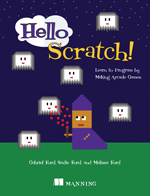
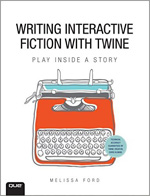
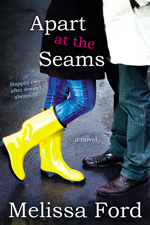
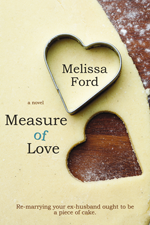
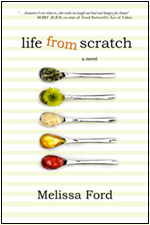
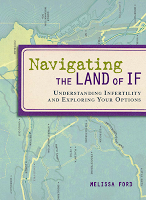


0 comments
Fantastic interview! I love these thoughts:
“I hope my having posed these questions and offered up our (their) personal story in such a public way won’t make my children anxious or resentful. Rather, I’m hoping the book will serve as a testament to how deeply we desired them and that examining suppositions is an okay thing to do.”
I have the same hopes (and fears)
Love your interview! It sounds like a fascinating book. Maybe I’ll have to track it down after all!
Bea
Great to read author’s comments. I am bothered, though, that the publishing industry (my own field) seems so bent on happy-ending stories. It makes it difficult for others to break into the market, and I would be interested in hearing the author’s tips for crafting and selling a story.
Thanks so much for the interview. I read the book shortly after it came out and loved it!